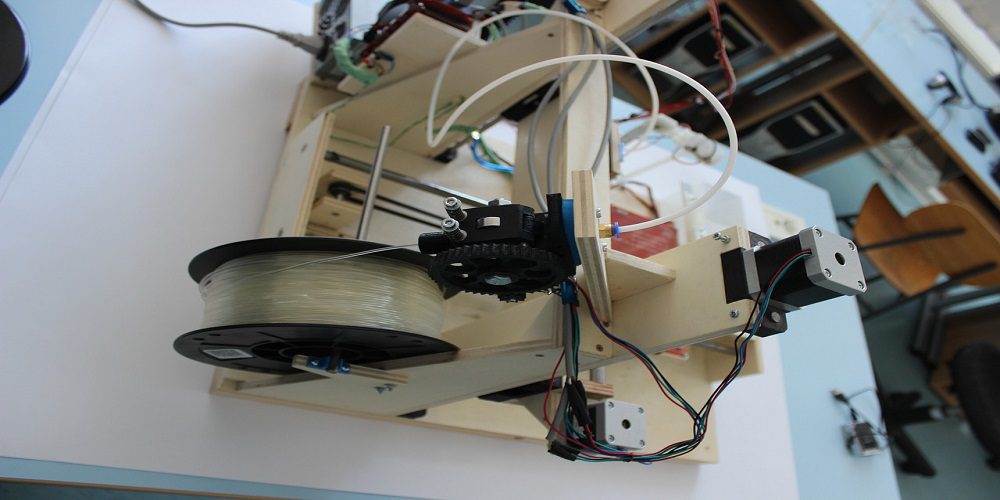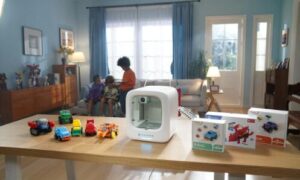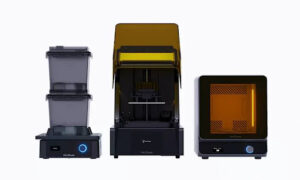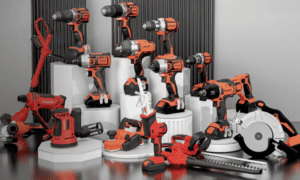Welcome to the exciting world of 3D printing, where imagination becomes reality at the touch of a button! If you’ve ever marveled at intricate objects seemingly materializing out of thin air, then you’re already familiar with the magic of this revolutionary technology. But have you ever wondered about the secret behind these incredible creations? Today, we are delving deep into the building blocks of 3D printing: exploring the vast array of material options that bring your wildest designs to life. From plastics to metals and everything in between, join us on an exploration that will unleash your creativity and push the boundaries of what’s possible in this captivating realm. Get ready to unlock a whole new dimension as we dive into this fascinating journey through materials in 3D printing!
Introduction to 3D printing
There are many different 3D printing technologies available, each with its strengths and weaknesses. The most common technology used for consumer-grade 3D printers is fused deposition modeling (FDM), which extrudes melted plastic filament through a nozzle to build up the object. Other popular technologies include stereolithography (SLA), in which layers of photopolymer resin are cured by ultraviolet light; selective laser sintering (SLS), in which a laser fuses together small particles of plastic, metal, or ceramic powder; and direct metal laser sintering (DMLS), in which a laser fuses together small particles of metal powder.
The material you choose for your 3D-printed object will depend on the application and the results you want to achieve. PLA and ABS plastics are the most commonly used materials for FDM 3D printing, while SLA printers typically use photopolymer resins. SLS and DMLS printers can print with a wide variety of materials, including plastics, metals, ceramics, and glass.
If you’re just getting started with 3D printing, we recommend using PLA or ABS plastic. These materials are relatively inexpensive and easy to work with. They can be printed on any type of 3D printer
Types of 3D printing materials
There are multiple types of 3D printing materials, each with its unique characteristics. The three most common categories of 3D printing materials are plastics, metals, and ceramics.
Plastics:
The most common type of 3D printing material is plastic. Plastic filament is fed into the printer, melted, and extruded layer by layer to create the desired object. There are many different types of plastic filaments available, each with its own set of properties. The two most common types of plastic filaments are ABS (acrylonitrile butadiene styrene) and PLA (polylactic acid).
ABS is a strong and durable plastic that is often used in the manufacturing of products such as Lego bricks. However, it has a higher melting point than PLA and can produce fumes that some people find unpleasant. PLA is a biodegradable plastic made from renewable resources such as cornstarch or sugarcane. It has a lower melting point than ABS and does not produce fumes when printed.
Metals:
Another type of 3D printing material is metal. Metal filaments are fed into the printer and melted using a laser or an electron beam. The molten metal is then deposited onto a built platform layer by layer to create the desired object. Unlike plastic filaments, metal filaments must be cooled between layers to prevent them from solidifying prematurely. This makes metal 3D printing slower than plastic 3D printing.
Plastic
When it comes to 3D printing, there are a variety of different materials that can be used. One of the most common materials used in 3D printing is plastic.
Plastic is a versatile material that can be used for a wide range of applications. It is strong and durable, making it ideal for products that need to withstand heavy use. Plastic is also lightweight, making it easy to transport and handle.
There are a variety of different types of plastic, each with its unique properties. The most common type of plastic used in 3D printing is ABS (acrylonitrile butadiene styrene). ABS is a strong and impact-resistant plastic that is widely available in a variety of colors.
Another popular type of plastic used in 3D printing is PLA (polylactic acid). PLA is made from renewable resources, such as cornstarch or sugar cane. It is biodegradable, making it an environmentally friendly option. PLA is available in a variety of colors, including clear and translucent options.
3D-printed plastics can be finished in several ways, such as painting, sanding, or polishing. They can also be machined or drilled just like any other type of plastic product.
Metal
The most common material used in 3D printing is metal. Metal 3D printing uses a process called directed energy deposition to melt and deposit metal powder onto a build platform. This process can be used to create objects from a variety of metals, including stainless steel, aluminum, titanium, and nickel alloys.
Metal 3D printing is an ideal option for creating parts that need to be strong and durable. Metal parts printed using this technology can withstand high temperatures and are resistant to corrosion. Additionally, metal 3D-printed parts can be customized to have specific mechanical properties, such as stiffness or ductility.
One downside of metal 3D printing is that it is a relatively slow process. Additionally, the build platform must be heated to high temperatures during the printing process, which can make the technology unsuitable for some applications.
Ceramic
Ceramic materials are one of the most versatile and widely used materials in additive manufacturing. 3D-printed ceramics can be used for a variety of applications, including medical implants, aerospace components, and consumer goods. Ceramic materials have a wide range of properties that make them well-suited for 3D printing, including high strength, durability, and resistance to heat and chemicals.
Ceramic materials can be difficult to work with, however, due to their brittle nature. It is important to use the proper type of ceramic material for your application to ensure that it will withstand the forces it will encounter during use.
Wood & Paper
There are a few key things to consider when selecting the right material for your 3D printing project. Wood and paper are two popular choices for 3D printing, but each has its unique benefits and drawbacks.
Wood is a strong and durable material that can be used for a variety of applications. However, it is also one of the more expensive materials to print with. Paper is a cheaper alternative to wood, but it is not as durable or sturdy. When choosing between wood and paper, it is important to consider the final application of the product. If you need a strong and durable product, wood may be the better choice. If you are looking for a cheaper option, paper may be the way to go.
There are a few key benefits to using each type of 3D printing material:
PLA: Polylactic Acid is one of the most popular materials used in 3D printing. It is made from renewable resources like corn starch, making it a more eco-friendly option. PLA is also biodegradable, so it won’t clog up landfills. This material is best for low-temperature applications and prints with a smooth finish.
ABS: Acrylonitrile Butadiene Styrene is another widely used 3D printing material. It is stronger and more durable than PLA, making it ideal for products that will be subject to wear and tear. ABS can also be heat-resistant, so it can be used for applications where high temperatures are a concern. However, this material does require higher printing temperatures and can produce fumes that are harmful to breathe in.
NYLON: Nylon is a versatile 3D printing material that can be used for a variety of applications. It has a smooth surface finish and is strong and durable. Nylon can also withstand high temperatures and is resistant to chemicals and solvents. One downside of nylon is that it can be difficult to print with because it tends to warp during the cooling process.
METALS: Metals are often used for 3D printing applications that require strength and durability. Common metals used in 3D printing include stainless steel, aluminum, and titanium. Metals can
Challenges and Limitations of using certain materials in 3D printing
Many different types of materials can be used in 3D printing, but not all materials are created equal. Some materials are more difficult to work with than others, and some materials have more limitations when it comes to 3D printing.
One of the most popular materials for 3D printing is ABS plastic. ABS plastic is a strong, durable material that can be used to create a variety of different products. However, ABS plastic is also one of the most difficult materials to work with when it comes to 3D printing. ABS plastic has a tendency to warp and deform when it is printed, which can make it difficult to create high-quality prints.
Another popular material for 3D printing is PLA plastic. PLA plastic is a biodegradable material that is made from cornstarch or other plant-based materials. PLA plastic is much easier to work with than ABS plastic, and it produces less waste during the printing process. However, PLA plastic is not as strong or durable as ABS plastic, and it can be more difficult to print with complex shapes and designs.
There are a variety of other materials that can be used in 3D printing, including metals, glass, and even human cells. However, each of these materials has its challenges and limitations that need to be considered before using them for 3D printing.
Common applications of 3D printing
3D printing has a wide range of applications in many different industries. Some of the most common applications for 3D printing include:
Prototyping: 3D printing is often used to create prototypes of products or parts before they are mass manufactured. This allows companies to test out the design and function of a product before investing in expensive tooling or production processes.
Customization: 3D printing can be used to create customized products or parts that are not available through traditional manufacturing methods. This includes creating personalized objects, such as name tags or jewelry, or creating one-of-a-kind objects, such as sculptures.
Education: 3D printers are increasingly being used in educational settings, from primary schools to universities. They allow students to create physical models of concepts they are learning about, which can help them better understand complex ideas.
Medicine: 3D printing is being used more and more in the medical field, from creating custom prosthetics and implants to printing human tissue for research.
Conclusion
3D printing has revolutionized the way we create products and use materials, making it easier than ever to produce custom components. By exploring the different material options available for 3D printing, you can find a solution that is perfect for your project and get started with creating something unique. Whether you are looking to create high-strength parts or lightweight components, there is sure to be an option that will meet your needs. With so many possibilities at your disposal, let’s see what amazing creations you can come up with!



































